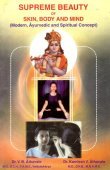Majjadhatu, Majjādhātu, Majja-dhatu: 2 definitions
Introduction:
Majjadhatu means something in Hinduism, Sanskrit. If you want to know the exact meaning, history, etymology or English translation of this term then check out the descriptions on this page. Add your comment or reference to a book if you want to contribute to this summary article.
In Hinduism
Ayurveda (science of life)
Source: Google Books: A Practical Approach to the Science of AyurvedaMajjādhātu (मज्जाधातु, “bone tissue”).—One of the seven fundamental tissues (saptadhātu).—Bones are packed with marrow in their empty spaces. Its function is to fill the bony spaces with nourishing fat and provide lubrication, oiliness and strength to the body. It also carries motor and sensory impulses.
Source: gurumukhi.ru: Ayurveda glossary of termsMajjādhātu (मज्जाधातु):—Sixth of the seven basic Dhātus, whose function is to fill the bony cavities. It is predeminant of Jala Mahābhūta.

Āyurveda (आयुर्वेद, ayurveda) is a branch of Indian science dealing with medicine, herbalism, taxology, anatomy, surgery, alchemy and related topics. Traditional practice of Āyurveda in ancient India dates back to at least the first millenium BC. Literature is commonly written in Sanskrit using various poetic metres.
See also (Relevant definitions)
Relevant text
Search found 1 books and stories containing Majjadhatu, Majjādhātu, Majja-dhatu, Majjā-dhātu; (plurals include: Majjadhatus, Majjādhātus, dhatus, dhātus). You can also click to the full overview containing English textual excerpts. Below are direct links for the most relevant articles:
Related products
